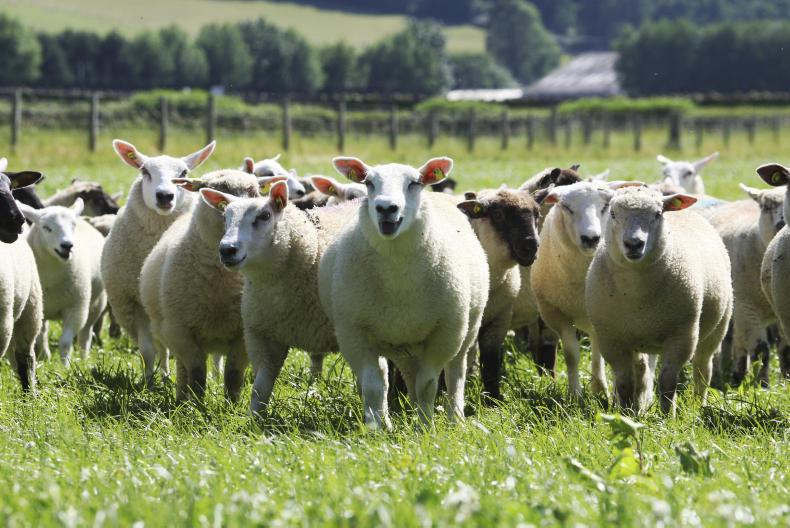The two primary tasks selected by farmers participating in the Sheep Welfare Scheme are pregnancy scanning and mineral supplementation of ewes post-mating.
There are still significant numbers partaking in the six remaining tasks – lameness control, parasite control, prevention of flystrike, supplementation of lambs pre-weaning, parasite control and mineral supplementation of lambs post-weaning.
It is important to note that requirements for many of these tasks will be commencing in the coming weeks.
Remember that receipts for products purchased must be retained and made available should a Department inspection take place, while an inspection can also request a visual assessment of the flock.
Lameness control
Lameness control is a measure for lowland flocks which aims to establish the level of lameness and implement a programme to reduce its incidence.
The flock must be assessed five times during the year at the following time frames: during May/June; July/August; prior to mating (August to September/October); at least once between mating and lambing; and finally at any other time that the flock owner sees as delivering the best benefit.
The number of sheep treated at the time of assessment must also be recorded, along with the product used and any other lameness preventative measures.
An extensive guide on implementing a lameness control programme can be found at www.farmersjournal.ie/sheep.
Flystrike control
This option includes implementing a suitable programme that prevents flystrike on sheep during the high-risk months.
Control is focused on mechanical means such as dagging, crutching or shearing and can take place in tandem with chemical control.
In addition, sheep must be assessed twice during the period from 1 June to 30 September for the presence of dags and scored on a scale of zero (clean/no dags) to five (chronically affected).
The number of sheep with a dag score of one or greater and dagged must be recorded along with receipts relating to chemical control measures.
Mineral supplementation of lambs
Mineral supplementation of lambs pre-weaning is a hill flock measure aimed at reducing deficiencies in lambs.
The terms and conditions state supplementation is required during the main grazing season pre-weaning, which the Department of Agriculture advises is the four- to six-week period prior to weaning.
If there is a significant spread in lambing dates, then a split programme can be implemented.
It is up to farmers selecting this measure to contact labs approved by the Department to request a sampling kit.
Supplementation can take the form of drenches or liquid minerals, boluses or injectables.
The Department also advises that manufacturers’ guidelines will determine the frequency of use.
For example, a long-lasting bolus will suffice for one treatment, where a liquid drench supplement may be required every few weeks if recommended by the manufacturer.
Minerals can only be purchased from business operators licensed by the Department of Agriculture.
Parasite control
The parasite control measure covers both hill and lowland flocks, but differs slightly across each.
Lowland flocks must carry out a minimum of two faecal egg counts during the period 1 June to 30 September to establish the worm burden and ascertain the need for treatment.
For hill flocks, the measure requires carrying out one faecal egg count on lambs post-weaning for the presence of worms and treating accordingly.
Both systems will be policed by laboratory results, receipts for the purchase of an anthelmintic and records kept in the scheme action record book.
It is up to farmers selecting this measure to contact labs approved by the Department to request a sampling kit.
A list can be found at www.agriculture.gov.ie under the farmer schemes and payment and sheep welfare scheme headings.
Meal feeding post-weaning
The meal feeding post-weaning option for hill farmers requires meal to be supplemented for a four-week period.
The recommended concentrate supplementation level follows a rising scale starting at 75g per head daily in week one, increasing to 125g in week two, 175g in week three and 250g in week four.
This gives a minimum input per lamb of 4.4kg over a four-week period.
All lambs in the flock must be meal fed for the four weeks, but feeding dates can be split where there is an age gap between lambs and more than one weaning date.
Feed receipts must be maintained for inspection and inspectors can also inspect feeding points for evidence of feeding.
Feed purchase receipts can also be cross-referenced to dispatch documents to ensure feeding was undertaken for the required period.






 This is a subscriber-only article
This is a subscriber-only article










SHARING OPTIONS: